Finding Input and Output IDs
Every option (for example, File and Edit) in an emulator's menu has a unique Control ID number. Terminal Launcher uses these IDs to simulate the selection of options.
Terminal Launcher uses
- The IDs of the Select All and Copy functions as the Output IDs
- The ID of the Paste function as the Input ID
To find these numbers, use Winspector, available at the Gipsysoft Web site, or Spy++, available from Microsoft's developer Web site.
This section explains how to use Winspector.
Setting Up Winspector
-
Run the emulator. Don't close it.
In this example, the emulator is Quick32.
-
Run Winspector.
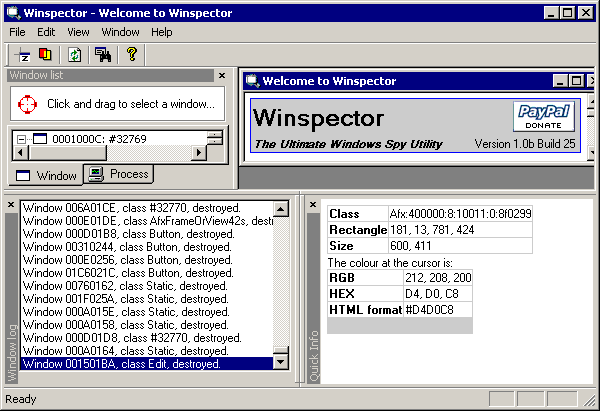
-
Arrange the windows so that emulator window and Winspector window are both visible on the screen.
-
Click and drag the Winspector icon to the title bar of the emulator, then release the mouse.
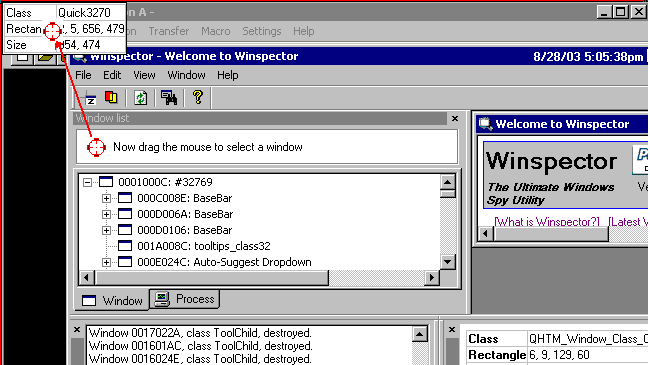
-
Verify that the title displayed on the emulator's title bar is listed among applications in Winspector's Click and Drag To Select a Window pane.
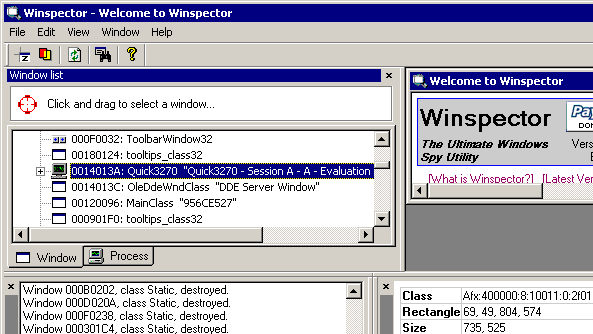
-
Right-click the emulator name, then click Messages.
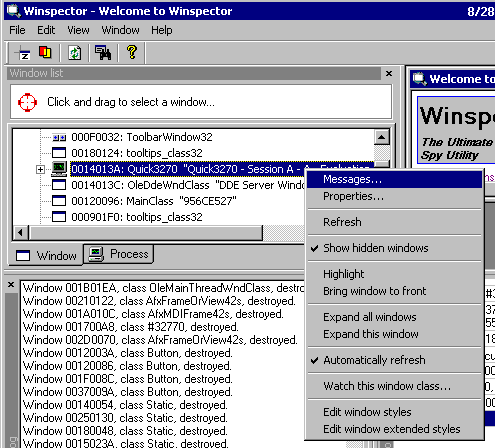
With the Messages window open, Winspector is ready to capture and log messages.
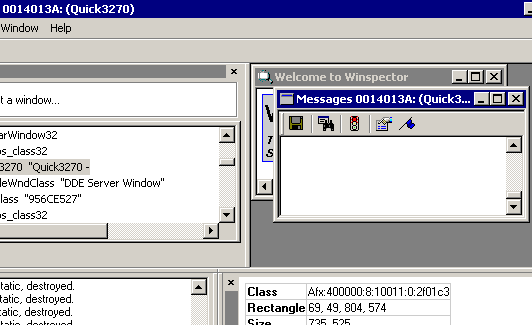
-
Limit what Winspector captures and logs.
-
Right-click in the Messages window, then uncheck Show Return Values.
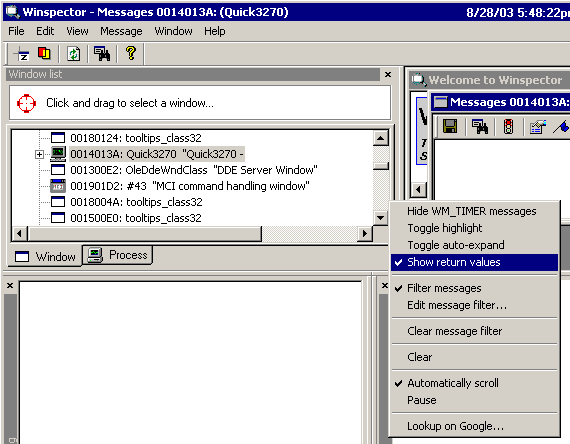
-
Right-click in the Messages window, then click Edit Message Filter.
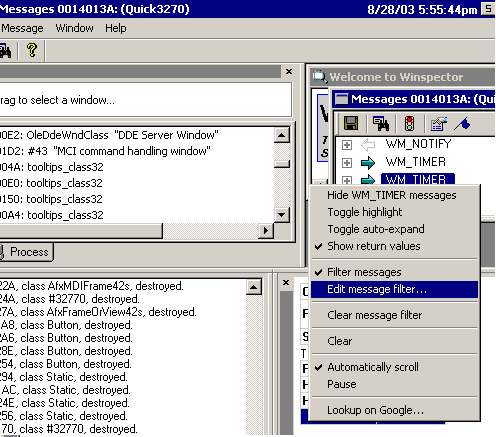
-
From the Edit Message Filter Window, click Filter All.
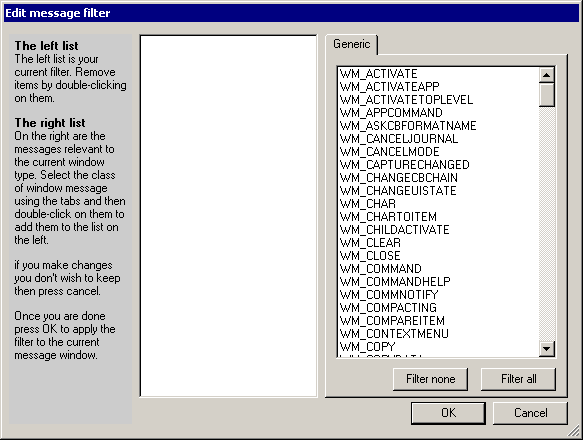
When all messages are filtered, Winspector rejects all messages. The Messages window won't be cluttered with unwanted messages.
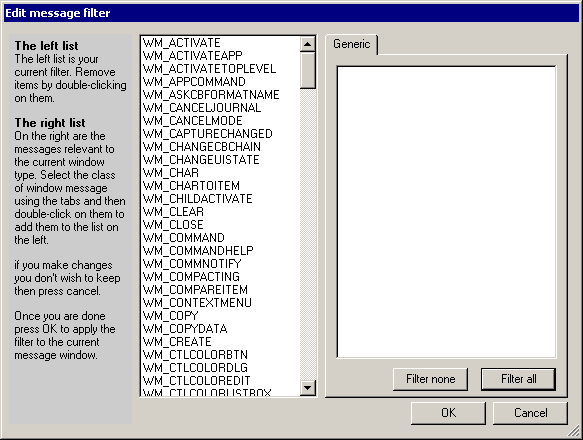
-
Scroll to and double-click WM_COMMAND, then click OK.
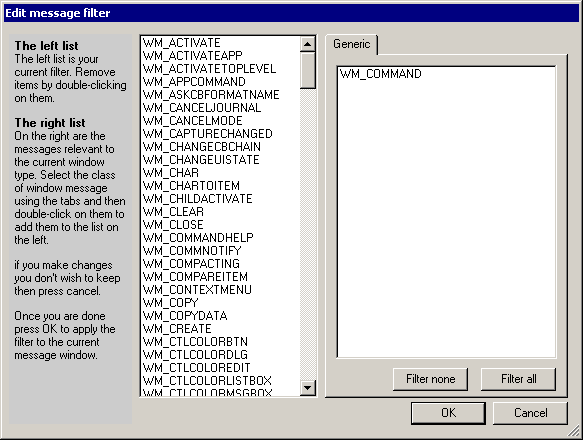
-
Viewing Control ID Numbers
-
(Conditional) From the emulator's Edit drop-down list, click Select All.
If the emulator doesn't have a Select All option, skip this step.
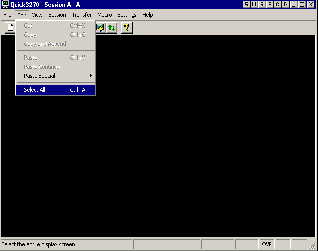
-
In Winspector's Messages window, expand WM_COMMAND.
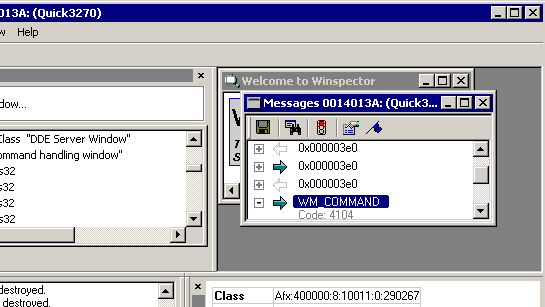
-
View the Control ID.
Winspector uses the Code line to display the control ID. In this example, the control ID for Select All is 4104.
-
Find the Control IDs for the Copy and Paste functions by repeating Step 1 through Step 3.
-
Configure Terminal Launcher by adding the Control IDs.
Using Alternatives to Control ID Numbers
In the following situations, use an alternative to Control ID numbers:
- An emulator doesn't have standard Control IDs. Either no IDs are present or all functions have the same ID.
- The Control IDs in the Terminal Launcher configuration don't work.
- You don't have access to software such as Winspector or Spy++ to find the Control IDs.
The alternatives simulate keyboard shortcuts that achieve the same outcome. The keystrokes that you simulate depend on the keyboard shortcuts. The following tables lists the typical shortcuts:
| Function | Keyboard Shortcut |
|---|---|
Copy |
Ctrl+C |
Paste |
Ctrl+V |
Select All |
Ctrl+A |
For example, if the Select All Control ID 64 and the Copy Control ID 50 don't work with Terminal Launcher, try any of the following alternatives in the Output IDs text box.
Alternative One
\Alt+E,S,\Alt+E,C
This output simulates the following:
- Alt+E (displays the Edit menu list)
- S (selects Select All)
- Alt+E (brings up the Edit menu list)
- C (selects Copy)
Keys are not case sensitive.
Alternative Two
\Ctrl+a,\Ctrl+c
This output simulates the following:
- Control+A (a keyboard shortcut for Select All)
- Control+C (a keyboard shortcut for Copy)
Alternative Three
\Alt+e,\|40,\|40,\N,\Alt+e,\N
This output simulates the following:
- Alt+E (displays the Edit menu list)
- Down-arrowDown-arrow (scrolls down to Select All)
- Enter (selects Select All)
- Alt+E (displays the Edit menu list)
- Enter (selects Copy)
All of these alternatives might or might not work with particular emulators. They will all need customizing to suit the emulator. You can adapt the alternatives to suit any requirement (for example, selecting other menu items).
Finding a Terminal Launcher configuration, including finding alternatives to the Control IDs, requires trial and error, which becomes easier with experience.
When you use alternatives, the increased number of steps slows the Terminal Launcher process slightly.